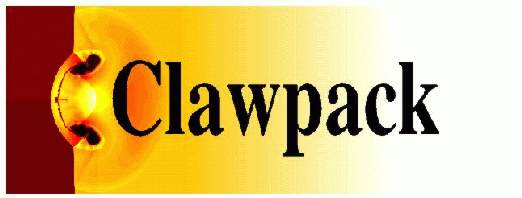|
setsurfalpha.m.html |
 |
|
Source file: setsurfalpha.m
|
|
Directory: /home/rjl/git/rjleveque/clawpack-4.x/matlab
|
|
Converted: Sun May 15 2011 at 19:15:59
using clawcode2html
|
|
This documentation file will
not reflect any later changes in the source file.
|
function setsurfalpha(a,snum)
% SETSURFALPHA sets the alpha (transparency) value for isosurfaces
%
% SETSURFALPHA(A,SNUM) sets the alpha value to A for isosurfaces
% specified in vector SNUM, where the entries of SNUM are integers
% specifying isosurface number corresponding to entries in ISOSURFVALUES.
% A should be a value between 0 and 1.
%
% SETSURFALPHA(A) sets all isosurfaces to alpha value A.
%
% SETSURFALPHA, by itself, sets the alpha value to 1.
%
% SETSURFALPHA sets the 'FaceAlpha' property of the isosurface patch.
%
% Transparency will only be set if the OpenGL renderer is the current
% figure renderer. To see if you have this renderer available on your
% system, use the command
%
% set(gcf,'Renderer')
%
% to get list of available renderers for your system. If you have the OpenGL
% renderer, you can set it using
%
% set(gcf,'Renderer','OpenGL');
%
% Or, simply use the command SETOPENGL. This will set the renderer to
% OpenGL if you have it on your system, and report a warning otherwise.
%
% If the OpenGL Renderer is not set, this command has no effect.
%
% See also SETSURFCOLOR, SETOPENGL, OPENGL, PATCH, ISOSURFACE.
rstr = get(gcf,'Renderer');
if (strcmp(rstr,'OpenGL') == 0)
return;
end;
a = min([max([a,0]),1]);
isurfaces = get_isosurfaces;
if (nargin < 2)
snum = 1:length(isurfaces);
if (nargin < 1)
a = 1;
end;
end;
for ns = 1:length(snum),
n = snum(ns);
if (n < 1 | n > length(isurfaces))
continue;
end;
isurfs = isurfaces{n};
for level = 1:length(isurfs),
isurf_vec = isurfs{level};
for k = 1:length(isurf_vec),
is = isurf_vec(k);
set(is,'FaceAlpha',a);
udata = get(is,'UserData');
udata.alpha = a;
set(is,'UserData',udata);
end;
end;
end;

